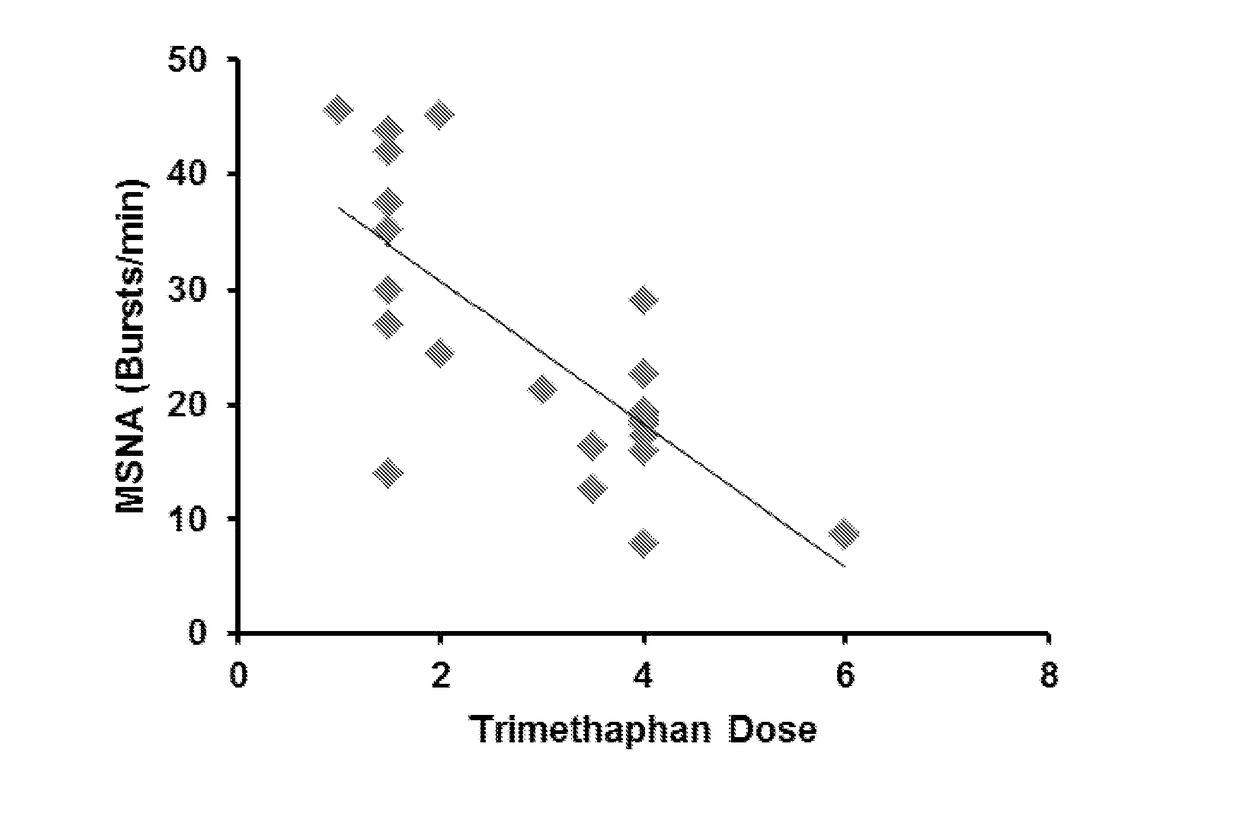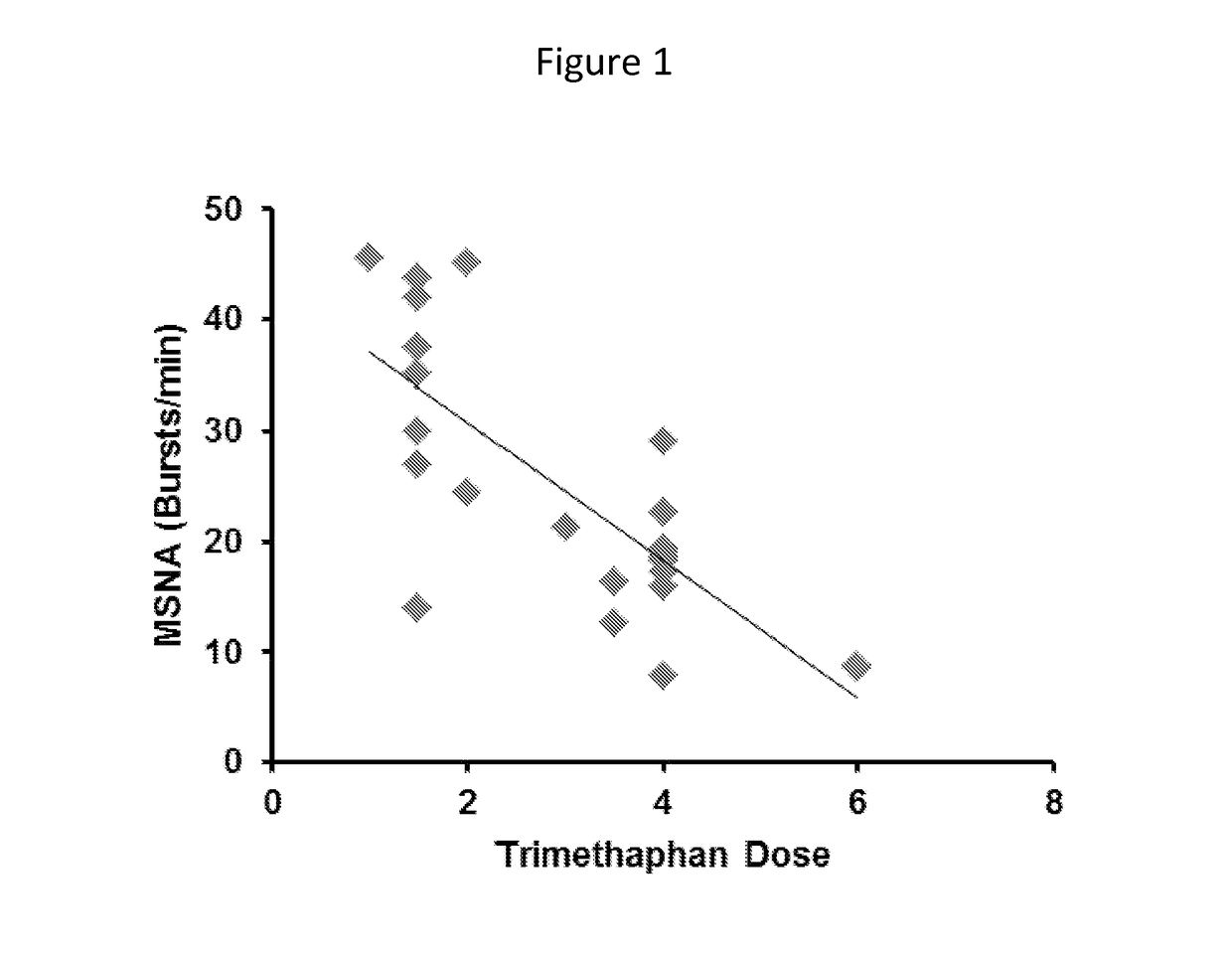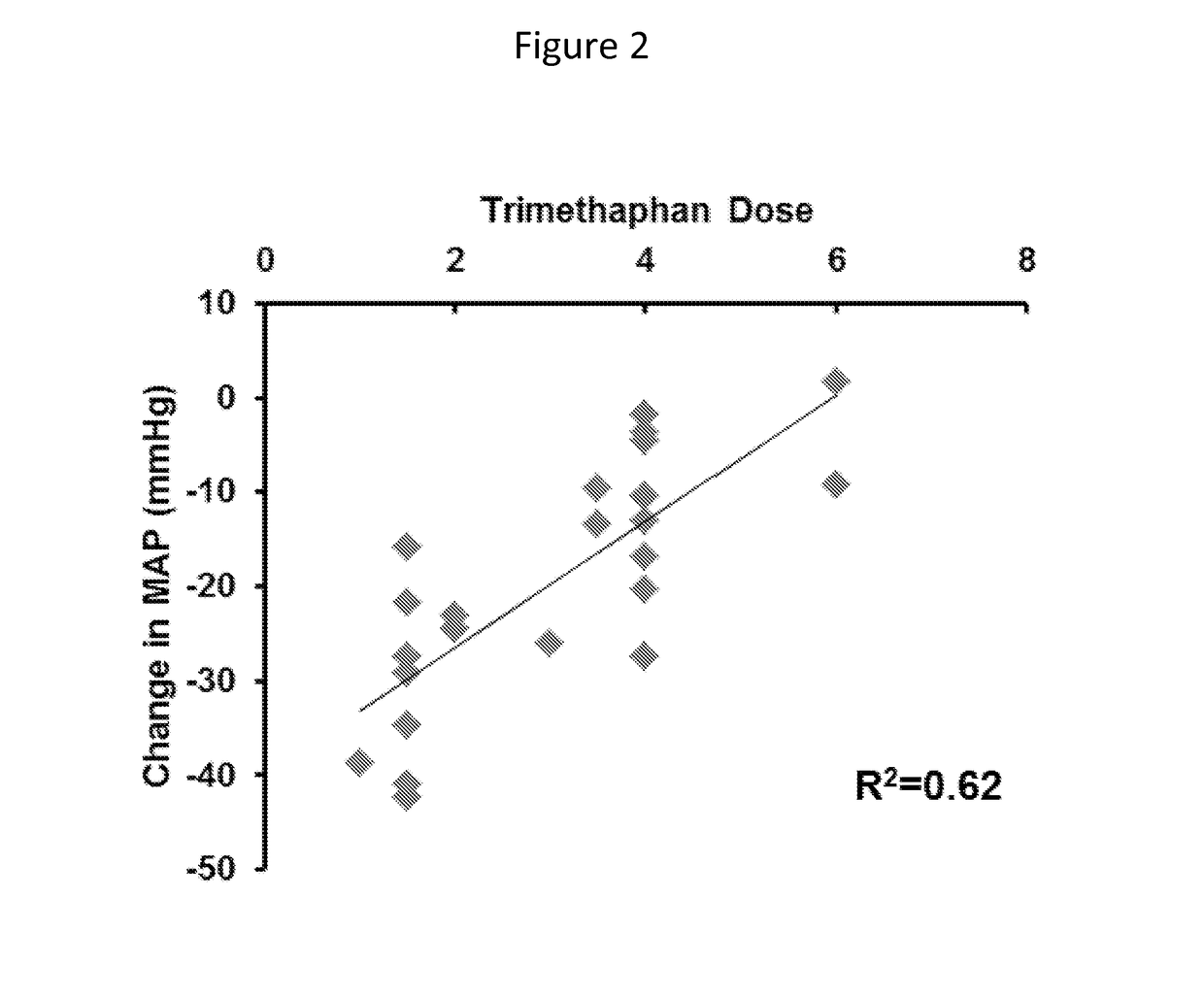Methods and materials for treating elevated sympathetic nerve activity conditions
a sympathetic nerve and activity condition technology, applied in the field of methods and materials for treating elevated sympathetic nerve activity conditions, can solve the problems of congestive heart failure of heart failure, and achieve the effects of reducing symptoms, improving health status, and disrupting pathophysiology
- Summary
- Abstract
- Description
- Claims
- Application Information
AI Technical Summary
Benefits of technology
Problems solved by technology
Method used
Image
Examples
example 1
Aging Enhances Autonomic Support of Blood Pressure in Women
[0031]The effect of ganglionic blockade on arterial blood pressure and how this relates to baseline muscle sympathetic nerve activity in 12 young (25±1 years) and 12 older postmenopausal (61±2 years) women were examined. The women were studied before and during autonomic blockade using trimethaphan camsylate. At baseline, muscle sympathetic nerve activity burst frequency and burst incidence were higher in the older women (33±3 versus 15±1 bursts / min; 57±5 versus 25±2 bursts / 100 heartbeats, respectively; PHypertension, 63:303-308 (2014).
[0032]In summary, these results demonstrate that autonomic support of blood pressure is greater in older women compared with young women and that elevated sympathetic nerve activity in older women contributes importantly to the increased incidence of hypertension after menopause.
example 2
Distinguishing High and Low Sympathetic Activity Individuals
[0033]Both normal human subjects and patients with diseases such as resistant hypertension can have very wide ranges of baseline sympathetic activity. The following was developed to distinguish those individuals with high levels of baseline sympathetic activity from individuals with lower levels of baseline sympathetic activity. Trimethaphan camsylate, a ganglionic blocking drug, was administered (e.g., by infusion) at 1-4 mg / minute for 5-10 minutes to 24 healthy humans, while non-invasive beat-to-beat measurements of arterial pressure were made. A fall in blood pressure during brief escalating doses of trimethaphan camsylate was directly related to baseline sympathetic activity in healthy humans. Individuals with high levels of sympathetic activity exhibited larger reductions in blood pressure. The relationship between the fall in blood pressure and baseline sympathetic activity in a group of about 20-30 healthy women rang...
example 3
Treating Resistant Hypertension
[0034]A person suffering from resistant hypertension is administered a ganglionic blocking drug (e.g., trimethaphan camsylate) or another sympatholytic agent or combination of sympatholytic agents (e.g., phentolamine to block alpha-adrenergic receptors followed by esmolol to block beta-adrenergic receptors) by, for example, infusion. When administering phentolamine followed by esmolol, between a loading dose of 0.15 mg / kg of phentolamine is used followed by a maintenance dose of 0.015 mg / kg followed by between about 25 and 300 mg of esmolol per minute for about 5 to 10 minutes. Blood pressure measurements (e.g., beat-to-beat measurements of arterial pressure) are obtained for about 5 to 10 minutes prior to, during, and for about 5 to 10 minutes after administration of the sympatholytic agents. From these measurements, the degree of blood pressure drop in response to the administrations is determined A blood pressure drop greater than 20 mmHg indicates ...
PUM
| Property | Measurement | Unit |
|---|---|---|
| Vapor pressure | aaaaa | aaaaa |
| Electrical resistance | aaaaa | aaaaa |
Abstract
Description
Claims
Application Information
 Login to View More
Login to View More - R&D
- Intellectual Property
- Life Sciences
- Materials
- Tech Scout
- Unparalleled Data Quality
- Higher Quality Content
- 60% Fewer Hallucinations
Browse by: Latest US Patents, China's latest patents, Technical Efficacy Thesaurus, Application Domain, Technology Topic, Popular Technical Reports.
© 2025 PatSnap. All rights reserved.Legal|Privacy policy|Modern Slavery Act Transparency Statement|Sitemap|About US| Contact US: help@patsnap.com



